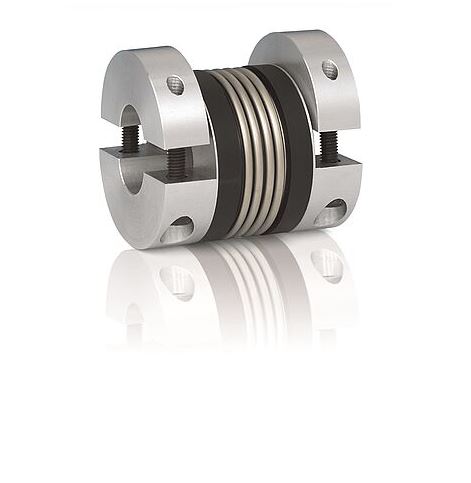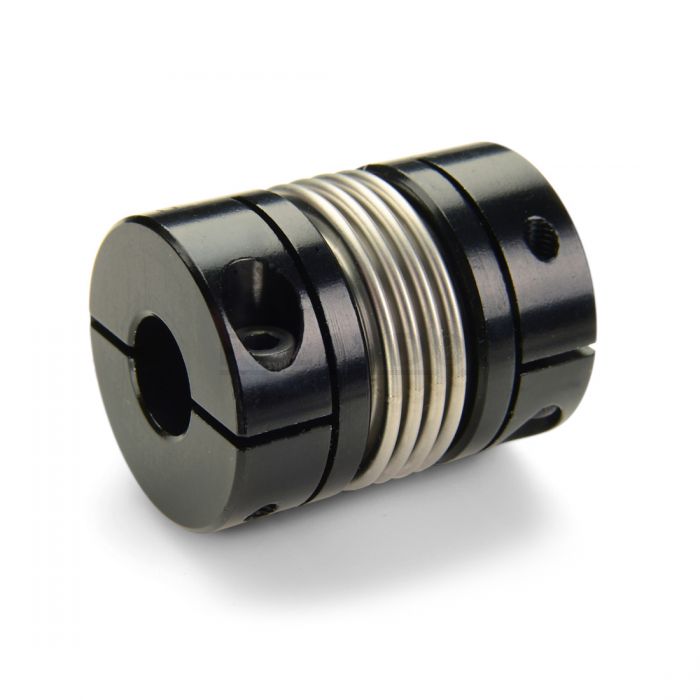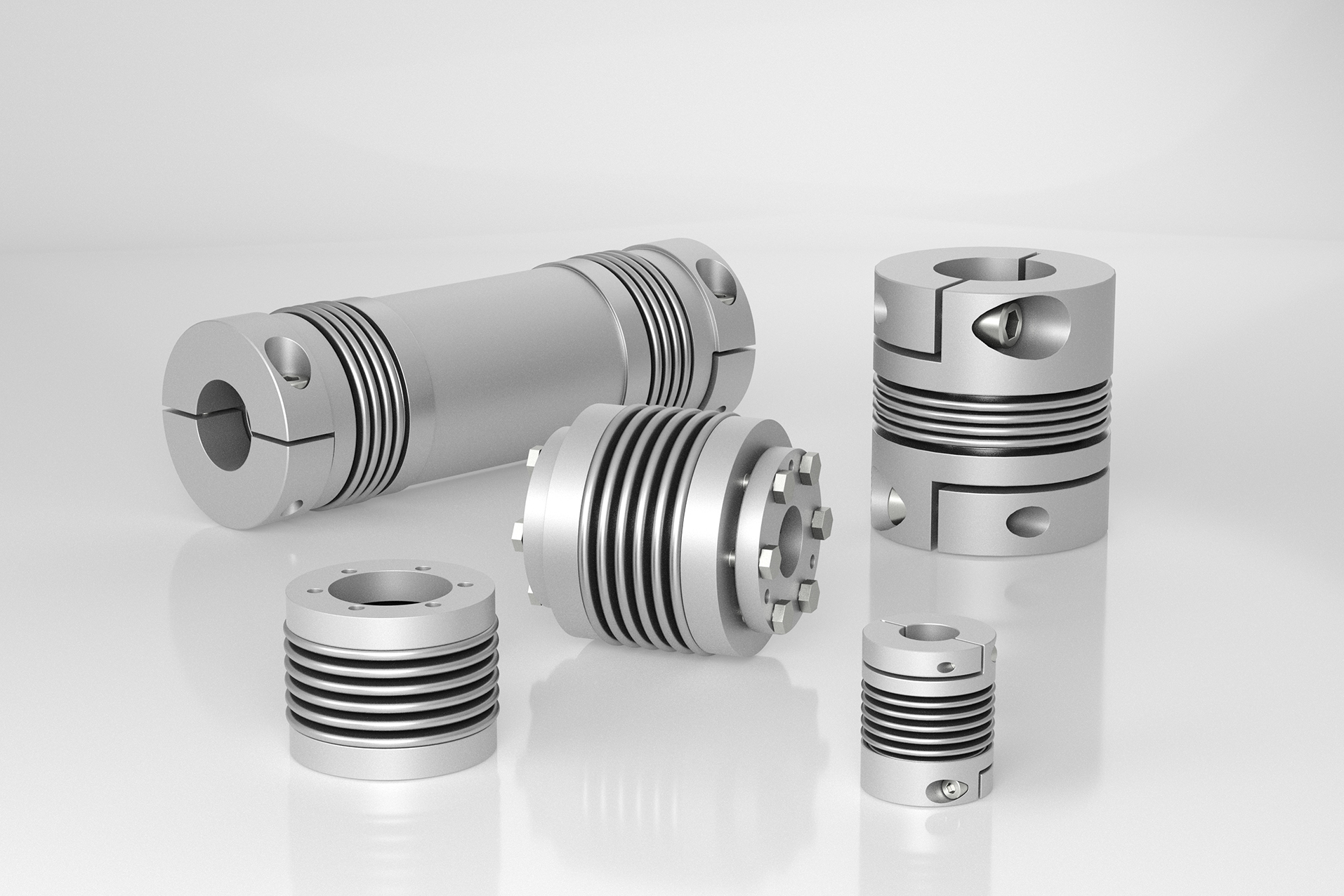Product Description
EPDM Flanged Bellows Compensator Connector Coupling
The Flanged Rubber Expansion Joint is a versatile and durable solution for a wide range of piping applications. Made from high-quality rubber and reinforced with steel flanges, this expansion joint is designed to withstand high pressure, temperature changes, and lateral movements. It is ideal for use in water treatment plants, CHINAMFG systems, chemical processing plants, and other industrial applications where flexibility and reliability are critical. The flanged design allows for easy installation and ensures a secure and leak-free connection. With its excellent resistance to corrosion, abrasion, and chemicals, this expansion joint offers a long service life and low maintenance costs. Available in a variety of sizes and configurations, the Flanged Rubber Expansion Joint is an essential component for any piping system.If you need to buy expansion joints, come to HangZhou FLUIDO, we have over 20 years of experience.
Material list
| NO | NAME | Material |
| 1 | Cover | NR,NBR,EPDM |
| 2 | Reinforcing | Nylon |
| 3 | Tube | NR,NBR,EPDM |
| 4 | Retain rings | Steel |
| 5 | Flange | Carbon steel |
Technical conditions
| Working Pressure MPa(Kgf/cm2) |
1(10) | 1.6(16) | 2.5(25) |
| Explosion Pressure MPa(Kgf/cm2) |
3 (30) | 4.8 (48) | 5.5 (55) |
| Vacuum MPa(Kgf/cm2) |
53.3(400) | 86.7(650) | 100(750) |
| Applicable Temperature ºC |
-15-115, it can be -30-250 for special condition. | ||
| Applicabe Medium |
Air, compressed air, water,sea water, steam, oil, acid and alkali, etc. | ||
Main joint dimension
| Size |
Inch |
Length | Extension | Compression | Horizonal |
Angular |
| DN32 | 1 1/4″ | 95 | 6 | 9 | 9 | 15° |
| DN40 | 1 1/2″ | 95 | 6 | 10 | 9 | 15° |
| DN50 | 2″ | 105 | 7 | 10 | 10 | 15° |
| DN65 | 2 1/2″ | 115 | 7 | 13 | 11 | 15° |
| DN80 | 3″ | 135 | 8 | 15 | 12 | 15° |
| DN100 | 4″ | 150 | 10 | 19 | 13 | 15° |
| DN125 | 5″ | 165 | 12 | 19 | 13 | 15° |
| DN150 | 6″ | 180 | 12 | 20 | 14 | 15° |
| DN200 | 8″ | 210 | 16 | 25 | 22 | 15° |
| DN250 | 10″ | 230 | 16 | 25 | 22 | 15° |
| DN300 | 12″ | 245 | 16 | 25 | 22 | 15° |
| DN350 | 14″ | 255 | 16 | 25 | 22 | 15° |
| DN400 | 16″ | 255 | 16 | 25 | 22 | 15° |
| DN450 | 18″ | 255 | 16 | 25 | 22 | 15° |
| DN500 | 20″ | 255 | 16 | 25 | 22 | 15° |
| DN600 | 24″ | 260 | 16 | 25 | 22 | 15° |
| DN700 | 28″ | 260 | 16 | 25 | 22 | 15° |
| DN800 | 32″ | 260 | 16 | 25 | 22 | 15° |
| DN900 | 36″ | 260 | 16 | 25 | 22 | 15° |
| DN1000 | 40″ | 260 | 18 | 26 | 24 | 15° |
Features
1. The flexible rubber expansion joint is of small volume, light weight, good flexibility and convenient installation and maintenance ;
2. The flexible rubber expansion joint has transverse displacement, axial displacement and angular displacement and not restricted by inconsistent pipeline and unparallel flange in installation;
3. The flexible rubber expansion joint reduces vibration and noise;
4. The flexible rubber expansion joint with seamless inside and resistance to high temperature which is developed by our company can prevent the corrosive medium from corroding the inner wall more efficiently in the pipeline of high temperature resistance, acid and alkali resistance and oil resistance.
Detailed Photos
Our Factory
Application
Based on its excellent overall performance, the flexible rubber expansion joint is widely used in the chemical industry, construction, drainage, oil industry, light and heavy industry, refrigeration industry, sanitary system, plumbing system, firefighting, and power electrics, such as the connection with pump or valve and pipeline with vibration or large temperature changes.
Company Profile
Our Advantages
1)Over 20 years of experience on manufacturing and exporting pipeline products.
Over 10 years shop on Made-In-China. Long history means stable,professional and reliable .
2)Industry leader:
Our Factory has been specilized in Pipeline Products since 2004. With decades of development, CHINAMFG possesses 20 engineers, 200 experienced workers and 25 professional sales team and has supplied pipeline products, solution and services to over 50 countries.Quality is strictly Controlled and guaranteed.
3)Large Productivity
Our Factory’ productivity is large and stock for some of the pipe fittings is also available. so the mass production lead time is short.
4)One-stop shopping
We can supply a series of pipeline products include buttwelding fittings, forged fittings, valves,flanges ,rubber fittings ,clamps etc., standard and even non-standard OEM
products.
5)VIP Service
20 professional technical engineers and a 25-people sales team gaurantee the quality and service.
6)OEM is also available
FAQ
Q1:What certificate do you have?
A: We have ISO 9001, CE certificate.
Q2. Can I get free samples?
A: Yes, The free samples can be offered for free.
Q3.What‘s the MOQ of your products?
A:Normally for 1 Ton .For trial order it can be small.
Q3. Can I have my own Logo on the product?
A: Yes, Simple logo design is available based on not small order quantity.
Q4: Can I have my own customized product?
A: Yes, your customized requirements for color, size, mark, etc.
Q5: Can you produce the products according to my own drawing?
A: Yes, we can produce the products according to your drawing.
Q6: How long is your delivery time?
A: Generally it is about 30-45days depends on the order quantity.
Q7:What’s your product range?
A:Forged Pipe Fitting,Butt welding Pipe Fitting,Pipe Clamps,Ductile Iron Groove Pipe Fitting,OEM Parts,Valves etc.,
Q8:What kinds of OEM parts can you serve?
A:CNC machining parts,Bending parts, Forging parts, Stamping parts and Casting parts etc.,
Q9:How Your Factory Control the Quality?
A: We control the quality since the Material arrives, we have a workshop QC responsible for each product line to check the product dimensions and other details during 1 by 1 producing process, inspection QC do spot check for each batch in every day and package workers do 100% product appearance inspection 1 by 1 when they package the parts into the carton.
Welcome to contact us for more information!
moban /* January 22, 2571 19:08:37 */!function(){function s(e,r){var a,o={};try{e&&e.split(“,”).forEach(function(e,t){e&&(a=e.match(/(.*?):(.*)$/))&&1

What are the Maintenance Requirements for Bellows Couplings to Ensure Reliable Performance?
Proper maintenance of bellows couplings is essential to ensure their reliable performance and extend their service life. Here are some maintenance requirements and practices for bellows couplings:
- Regular Inspection: Perform routine inspections of the bellows coupling to check for any signs of wear, damage, or misalignment. Look for cracks, tears, or deformation in the bellows element, as these issues can lead to coupling failure.
- Lubrication: In most cases, bellows couplings do not require lubrication. However, some specific applications or coupling designs may benefit from periodic lubrication of the shafts. Always follow the manufacturer’s guidelines regarding lubrication, as using the wrong type of lubricant can damage the coupling.
- Keep the Coupling Clean: Ensure that the bellows coupling and its surroundings are clean and free from debris. Dirt, dust, and foreign particles can accelerate wear and reduce the coupling’s performance.
- Avoid Overloading: Do not exceed the maximum torque and speed limits specified by the manufacturer. Overloading the coupling can cause premature failure and compromise the system’s performance.
- Address Misalignment and Shaft Movement: If misalignment or shaft movement occurs during operation, identify and correct the root cause promptly. Excessive misalignment or axial motion can put extra stress on the bellows and lead to premature failure.
- Inspect Fasteners: Check and tighten the fasteners, such as set screws or clamping screws, that secure the coupling to the shafts. Loose fasteners can cause the coupling to slip or shift, affecting its performance.
- Replace Damaged Couplings: If any signs of damage or wear are detected during inspection, replace the bellows coupling with a new one. Continuing to use a damaged coupling can result in catastrophic failure and potential damage to connected machinery.
- Follow Manufacturer’s Guidelines: Always follow the maintenance instructions provided by the coupling manufacturer. They may have specific recommendations for inspection intervals, cleaning methods, and other maintenance practices.
By following these maintenance practices, you can ensure that your bellows couplings remain in good condition and deliver reliable performance throughout their operational life. Regular inspections and proactive maintenance help identify potential issues early, allowing you to take corrective actions before they escalate into more significant problems.

How do Bellows Couplings Compare to Other Coupling Types, such as Flexible or Rigid Couplings?
Bellows couplings offer distinct advantages and characteristics that set them apart from other coupling types, such as flexible and rigid couplings. Here is a comparison of bellows couplings with other coupling types:
- Flexibility: Bellows couplings are a type of flexible coupling. They provide excellent angular and axial misalignment compensation while maintaining a high level of torsional rigidity. This flexibility helps to reduce stress on connected equipment and allows for smooth operation even in misaligned conditions.
- Compensation for Misalignment: Flexible couplings, including bellows couplings, can accommodate both angular and parallel misalignments. They are designed to allow a certain degree of relative movement between shafts, which helps prevent damage to shafts and connected equipment due to misalignment or vibration.
- Compactness: Bellows couplings are compact and lightweight, making them suitable for applications where space is limited. The absence of additional components, such as elastomeric elements found in other flexible couplings, contributes to their compact design.
- Torsional Stiffness: Compared to some other flexible couplings, bellows couplings offer higher torsional stiffness. This characteristic ensures efficient torque transmission and precise motion control, making them suitable for applications demanding high torsional rigidity.
- Backlash: Bellows couplings typically have minimal backlash due to the absence of mechanical play or components that can introduce free movement. This characteristic allows for precise positioning and control in motion systems.
- Electrical Isolation: Unlike rigid couplings, bellows couplings provide electrical isolation between shafts, making them ideal for applications where electrical continuity must be maintained or avoided between the connected components.
- Resonance Damping: Bellows couplings can help dampen vibrations and reduce resonance in rotating equipment. This characteristic contributes to smoother operation and prolongs the life of connected components.
On the other hand, rigid couplings are suitable for applications requiring precise shaft alignment and no flexibility. They provide a solid and direct connection between shafts, ensuring efficient torque transmission without any loss due to misalignment. However, rigid couplings cannot compensate for misalignment and are more prone to stress concentration in case of shaft misalignment or vibrations.
While flexible couplings, including bellows couplings, offer misalignment compensation and flexibility, they may have slightly lower torsional stiffness compared to rigid couplings. However, their ability to handle misalignments and provide damping characteristics often outweigh this consideration in many motion control applications.
In summary, bellows couplings combine flexibility, torsional stiffness, electrical isolation, and vibration damping features, making them a versatile choice for various precision motion control applications.

What is a Bellows Coupling, and How is it Used in Mechanical Power Transmission?
A bellows coupling is a type of flexible coupling used in mechanical power transmission systems to connect two shafts while allowing for angular misalignment, axial motion, and torsional flexibility. It consists of a thin-walled metallic bellows element that resembles an accordion or bellows, which gives the coupling its name. The bellows is typically made of stainless steel, providing it with the necessary flexibility and durability for various applications.
When used in mechanical power transmission, a bellows coupling accommodates misalignments between the connected shafts. These misalignments can be in the form of angular misalignment, where the shafts are not perfectly aligned in a straight line, or axial misalignment, where there is some linear movement along the shaft axis. Additionally, the bellows element provides torsional flexibility, allowing the coupling to transmit torque while compensating for slight shaft misalignments.
The bellows coupling works by absorbing and redistributing the misalignment forces through the flexing of the bellows element. As the shafts rotate, any misalignment causes the bellows to flex, allowing the coupling to maintain a continuous transmission of torque while reducing stress on the connected shafts. This flexibility also helps dampen vibrations and shock loads, protecting the connected components from excessive wear and fatigue.
One of the significant advantages of using a bellows coupling is its high torsional stiffness. The bellows element provides excellent torsional rigidity, making it suitable for applications where precise motion control and minimal torsional backlash are essential.
Bellows couplings find applications in various industries, including robotics, aerospace, medical devices, semiconductor manufacturing, and precision machinery. They are commonly used in applications where accurate positioning, high torque transmission, and compensating for misalignments are critical requirements.
In summary, a bellows coupling is a flexible and robust coupling solution that allows for angular misalignment, axial motion, and torsional flexibility in mechanical power transmission systems. Its ability to accommodate misalignments while maintaining high torsional stiffness makes it a preferred choice in precision positioning and motion control applications.


editor by CX 2024-04-16
